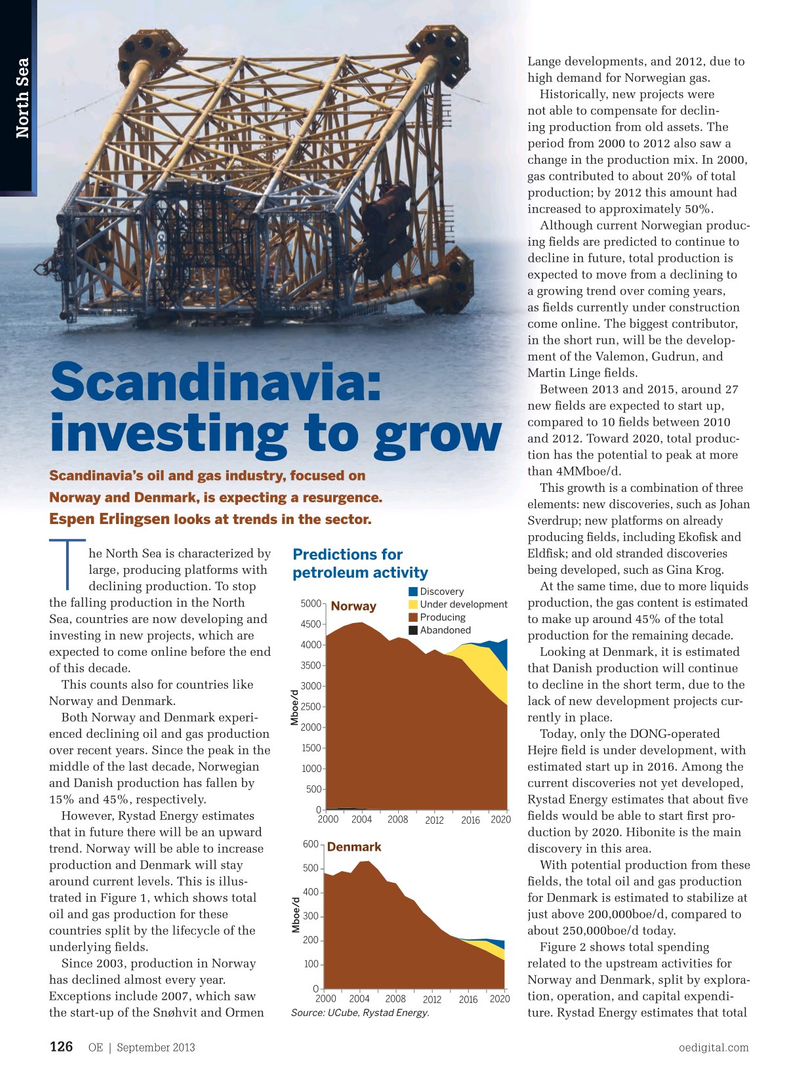
Page 124: of Offshore Engineer Magazine (Sep/Oct 2013)
Read this page in Pdf, Flash or Html5 edition of Sep/Oct 2013 Offshore Engineer Magazine
Lange developments, and 2012, due to high demand for Norwegian gas.
Historically, new projects were not able to compensate for declin- ing production from old assets. The
North Sea period from 2000 to 2012 also saw a change in the production mix. In 2000, gas contributed to about 20% of total production; by 2012 this amount had increased to approximately 50%.
Although current Norwegian produc- ing felds are predicted to continue to decline in future, total production is expected to move from a declining to a growing trend over coming years, as felds currently under construction come online. The biggest contributor, in the short run, will be the develop- ment of the Valemon, Gudrun, and
Martin Linge felds.
Between 2013 and 2015, around 27
Scandinavia: new felds are expected to start up, compared to 10 felds between 2010 and 2012. Toward 2020, total produc- investing to grow tion has the potential to peak at more than 4MMboe/d.
Scandinavia’s oil and gas industry, focused on
This growth is a combination of three
Norway and Denmark, is expecting a resurgence. elements: new discoveries, such as Johan
Espen Erlingsen looks at trends in the sector.
Sverdrup; new platforms on already producing felds, including Ekofsk and
Eldfsk; and old stranded discoveries he North Sea is characterized by
Predictions for being developed, such as Gina Krog. large, producing platforms with petroleum activity

 123
123

 125
125